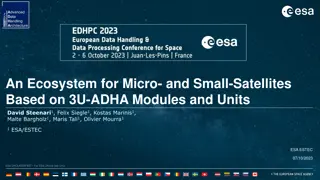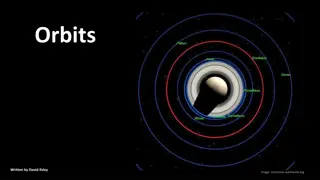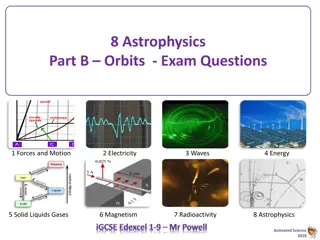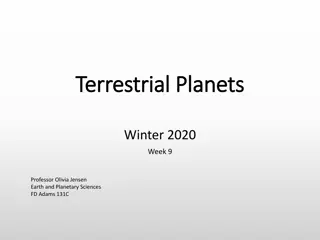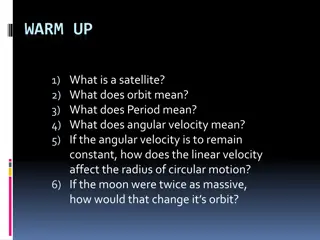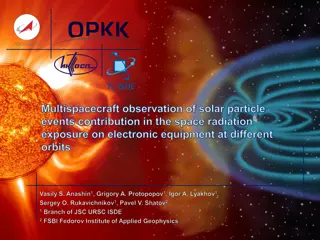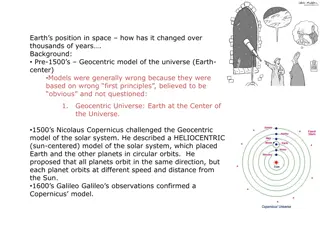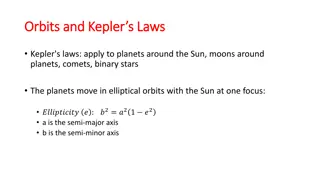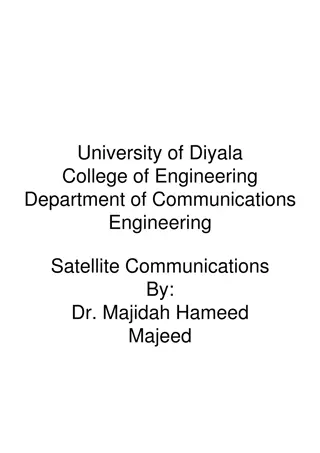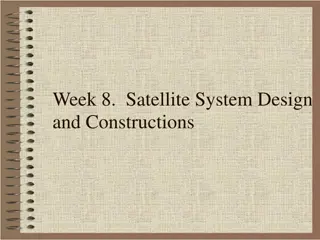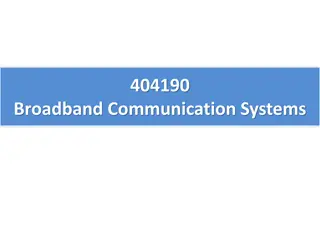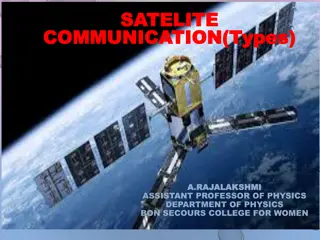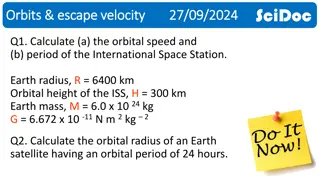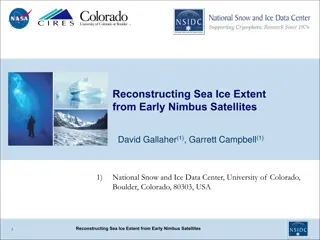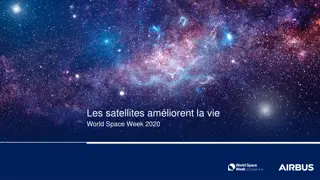Satellites and Orbits
The realm of satellites and orbits, covering topics such as Kepler's Laws, meteorological satellite orbits, the history of satellite remote sensing, and different types of orbits including geostationary and sun-synchronous orbits. Explore the significance of inclination angles, orbital speeds, and distances in satellite positioning and functionality. Learn about the evolution of satellite technology and key milestones in satellite meteorology.
Download Presentation

Please find below an Image/Link to download the presentation.
The content on the website is provided AS IS for your information and personal use only. It may not be sold, licensed, or shared on other websites without obtaining consent from the author. Download presentation by click this link. If you encounter any issues during the download, it is possible that the publisher has removed the file from their server.
E N D
Presentation Transcript
Satellites and Orbits Ralf Bennartz Cooperative Institute for Meteorological Satellite Studies University of Wisconsin Madison
Outline Kepler s Laws Meteorological Satellite Orbits A Brief History of Satellite Remote Sensing Instrumentation Recap: What is important?
Keplers Laws 1. The orbit of every planet is an ellipse with the sun at one of the two foci 2. A line joining a planet and the sun sweeps out equal areas during equal interval times 3. The square of the orbital period of a planet is directly proportional to the cube of the semi- major axis of its orbit Image source: http://onlinephys.com/keplerlaws.html
Inclination Inclination 0 degrees : On equator Inclination 90 degrees: Directly over pole Inclination < 90 degrees prograde orbit Inclination > 90 degrees retrograde orbit Image source: http://www.tpub.com/neets/book17/76.htm
Geostationary Orbit Inclination 0 degrees : On equator Speed: 1 rotation/24 hrs Distance to surface ~ 36000 km Image source: http://www.daviddarling.info/images/geostationary_orbit.jpg
Sun-synchronous Orbit Inclination slightly retrograde Speed: One rotation per 90- 100 mins Distance to surface ~ 600- 800 km Image source: http://spaceyuga.com/files/2010/04/orbital_plane.jpg
History of Satellite Remote Sensing Menzel et al., 2009, (BAMS): The first successful meteorological experiment conducted from a satellite was launched on Explorer VII on 13 October 1959, 50 years ago this year. Explorer VII carried an early version of a radiometer designed to measure Earth's heat balance from a satellite. The thermal radiation experiment, devised by Verner E. Suomi, along with University of Wisconsin - Madison engineering professor Robert J. Parent, established Suomi as the "father of satellite meteorology. Next 12 slides courtesy of Prof. F. House, Dept. Physics, Drexel University, Philadelphia, PA, UW- Madison graduate 1965.
TIROS Satellite Transition to ESSA Cart-Wheel Orientation
Remote Sensing Instruments See talk by HP Roesli


![[PDF⚡READ❤ONLINE] Neptune: The Planet, Rings, and Satellites](/thumb/21522/pdf-read-online-neptune-the-planet-rings-and-satellites.jpg)



